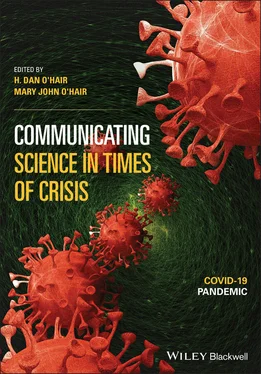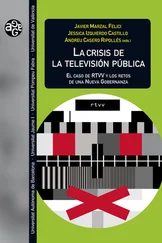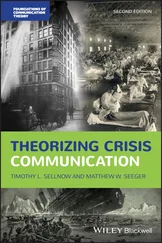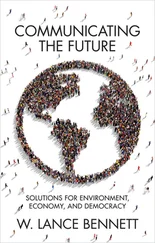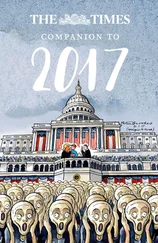As dozens of TMT studies have shown, elevated DTA motivates biased processing, such that, although people may show increased favoritism and tolerance toward those providing consensus for their own worldview, individuals will correspondingly exhibit greater hostility toward those threatening or merely holding a different worldview. What’s more, beyond attempting to derogate competing worldviews, such as can be observed when competing ideological positions encourage opposing responses to the coronavirus pandemic, anyone attempting to proclaim or publicize a compelling alternative approach to confronting the pandemic can not only undermine the legitimacy one’s own responses to the threat, but also, according to TMT, threaten one’s own overarching belief system, the basis of which acts as a vital buffer against the anxiety generated by death thoughts made salient by the pandemic.
As TMT posits, in such cases—when one’s own CWV is threatened by the mere existence of a competing CWV—individuals may often be motivated to engage in a defensive strategy called “threat accommodation” (Schimel et al., 2019), which involves keeping faith in one’s core worldview (e.g., the United States is powerful in spite of the “China virus”) but selectively modifying its peripheral aspects (e.g., by implicitly taking solace in the fact that Chinese health authorities have greatly reduced the spread of COVID-19 within China), so as to include otherwise-threatening ideas (i.e., the Chinese health officials’ responses to SARS-CoV-2 have been superior to our own) as a part of one’s own CWV (i.e., however, our medical science is the best in the world).
Another form of threat accommodation involves attempting to assimilate nonbelievers into one’s own worldview (Schimel et al., 2019), as for example often occurs via social media activity, as friends try to convert each other to their own way of thinking by exchanging friendly and helpful posts for others to learn about their own beliefs, or by showing how other intelligent and attractive people have been convinced to see the light. Social media may also have a significant impact on people’s risk perceptions and willingness to contribute to their friends’ awareness (Han & Xu, 2020). In this regard, MS can lead people to bypass the need to derogate dissimilar others in favor of simply attempting to convert the nonbeliever, thereby turning an otherwise worldview-threatening social interaction into a form of self-validation (Kosloff et al., 2017).
Although assimilation may be preferable to derogation, when rumors, gossip, and unreliable information are spread readily via the internet through social media, the propagation of diverse and contradictory views promoted by questionable web-based “experts” can produce confusion, anxiety, and panic that may further exacerbate pandemic spread, whether they are honest mistakes or intentional (Pazzanese, 2020). False or misleading information is dangerous, and it can cause widespread public reluctance to adopt well-founded infection control measures promoted by bonified medical authorities, and it can seriously delay the implementation of essential health interventions (WHO, 2018). Moreover, misinformation spread by government leaders may be even more harmful when it is disseminated over social media, for instance, when Facebook and Twitter posts include videos of President Trump expressing scorn for wearing masks and social distancing by willfully convening large, maskless, and crowded rallies (Baker, 2020; Egan, 2020), or by mocking his political opponent for so often wearing a mask (Mackey, 2020).
A TMT perspective also helps to explain how a political leader can continue to enjoy a devoted partisan following even in the face of an obvious failure to contain or curtail a crisis situation, or even in light of convincing evidence of the leader’s role in effectively intensifying the crisis. In the case of the coronavirus pandemic, as polls show, there is a clear relationship between people’s approval/disapproval of President Trump’s handling of the pandemic and their decisions to decline or choose mask wearing, social distancing, or seek a vaccination against the coronavirus. Ironically, this may perhaps not be such a bad thing, given how faith in the federal government to provide accurate information about the pandemic—and particularly trust in the White House, and Donald Trump in this regard—is at an all-time low, with more than two-thirds of Americans placing little or no confidence in the Trump Administration (Jackson & Newall, 2020).
Beyond those who were directly affected by a recent supper spreader event that took place in the White House Rose Garden (Buchanan et al., 2020)—likely including the President himself, along with at least seven other high ranking officials and lawmakers (Gringlas, 2020)—the spectacle of hundreds of unmasked people sitting shoulder to shoulder in the Rose Garden exhibiting a willful dismissal of precautions illustrates the failure of the White Hours to set an example useful in lowering the proliferation of COVID-19 (Fisher et al., 2020). The vehement rejection of the President’s policies and actions by his political opponents is only rivaled by the seeming blanket acceptance shown by his own party, which illustrates the polarizing nature of worldview bolstering and bashing predicted by TMT in response to the anxiety intensifying effects of colliding ideologies and conflicting worldviews.
In this regard, it is unsurprising to see both covert and overt racism toward Asians and Asian Americans. Since the first case of COVID-19 was discovered in China, xenophobia, discrimination, and verbal and physical attacks against Asians have intensified worldwide, and especially within the United States, as the pandemic has lengthened (Human Rights Watch, 2020) and President Trump has taken to referring to SARS-CoV-2 as “the China virus” (Yeung et al., 2020). Moreover, these observations, readily visible to lay observers, have been confirmed by empirical evidence. For example, Golec de Zavala et al. (2020) examined attitudes toward violations of traditional Polish norms in sexual and gender relations during the COVID-19 pandemic, collecting data both before and during the pandemic. Analyzing it via latent growth curve modeling, they found a linear increase in desires for national unity, authoritarianism, and rejection of sexual dissenters as the pandemic unfolded.
Along similar lines, Arrowood et al. (2017) found that reminding people of the Ebola epidemic (caused by a viral disease with a more deadly but lower infection rate than COVID-19) made death thoughts more accessible than the control condition and increased participants’ need for worldview defense. Similar studies examining responses to the Ebola epidemic have found DTA associated with reminders of the epidemic to increase political conservatism (Beall et al., 2016) and generate greater prejudice toward the gay community within the United States (Inbar et al., 2016). Likewise, Song et al. (2020) hypothesized that informational conformity in consumer behavior—which is formed on the basis of a desire to accurately interpret reality, and thus correctly behave—should buffer anxiety when mortality is made salient. Investigating the relationship among DTA, need to belong, informational conformity, and consumer behavior during the COVID-19 pandemic, Song et al. (2020) found DTA positively related to both the need to belong and informational conformity, which in turn influenced their consumer behavior. These findings are consistent with the TMT assertion that existential anxiety promotes the protection of traditional worldviews, while simultaneously stimulating the rejection of moral transgressors (Pyszczynski et al., 2015), and further illustrates how thinking about the coronavirus pandemic can initiate these biasing processes, resulting in actual behavioral outcomes.
Читать дальше
